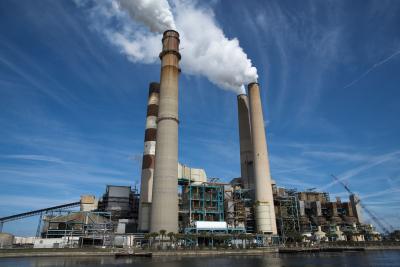The Injection Height of Aerosol Sources Plays a Role in the Destiny of Aerosols
Natural and human sources of small particles (known as aerosols) are important for understanding the Earth’s radiative energy budget and human health effects. There are, however, substantial uncertainties in processes influencing aerosol formation and spatial distribution. A study led by scientists at the U.S. Department of Energy’s Pacific Northwest National Laboratory revealed an underappreciated factor that could have a large impact: uncertainties in the atmospheric injection height of airborne particles and their gaseous sources. Researchers found that concentration levels are very sensitive to injection altitude, which depends on the physical height of the smokestack, the heat of the emissions, and the local meteorology. The influence of these characteristics also depends on season and region.
Models are important tools for understanding how gases and aerosols are transported and transformed within the atmosphere, and it is essential to evaluate them by comparing models with observations. The sensitivity of model predictions to the properties of the emission’s injection height may be an important factor that influences the agreement between observations and model predictions. Matching models and observations is important for evaluating how well we understand the surface concentrations of sulfur particles, their precursors, and how best to interpret satellite observations that measure sulfur dioxide gas. The results of this study indicated that the uncertainties in specifying source altitude will affect agreement between models and observations for gaseous precursors, but it was not so important to the eventual impact of particles on the planet’s energy budget.
Many studies have reported a large variation among modeled column burdens and lifetimes of aerosols and a primary precursor gas, sulfur dioxide (SO2). Discrepancies between measured and modeled surface concentrations result from a combination of biases in emissions and other aspects of model formulation. Researchers examined the impact of uncertainties in the injection heights of anthropogenic emissions using the Community Atmosphere Model version 5 (CAM5), an aerosol–climate model equipped with an aerosol source tagging capability. The research quantified differences in the spatial and temporal distributions of modeled near‐surface SO2 gas and aerosol concentrations caused by uncertainty in injection heights of industrial and shipping sources. They found that uncertainty in the assumed effective emission height strongly affects the near-surface concentrations and vertical profiles of SO2 and primary aerosols and to a lesser extent also affects the environmental impact of the emissions. These results indicate that an effective evaluation of model simulations for SO2 will require better knowledge of both the stack heights for major SO2 sources and their treatment of the thermal plume that occurs after the emission. One additional challenge to more accurate accounts of injection heights in global models is that thermal plume rise depends not only on emission characteristics but also ambient conditions.

